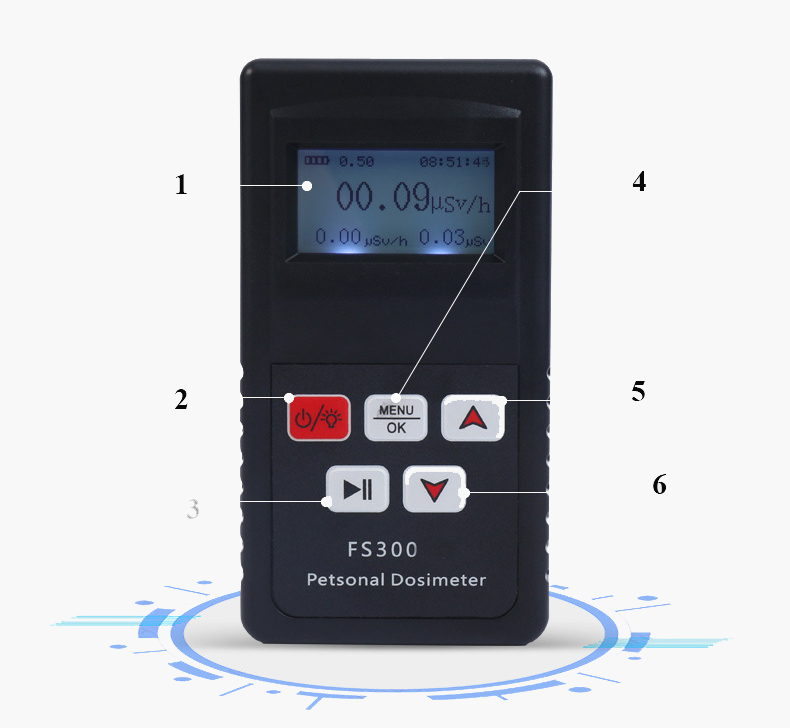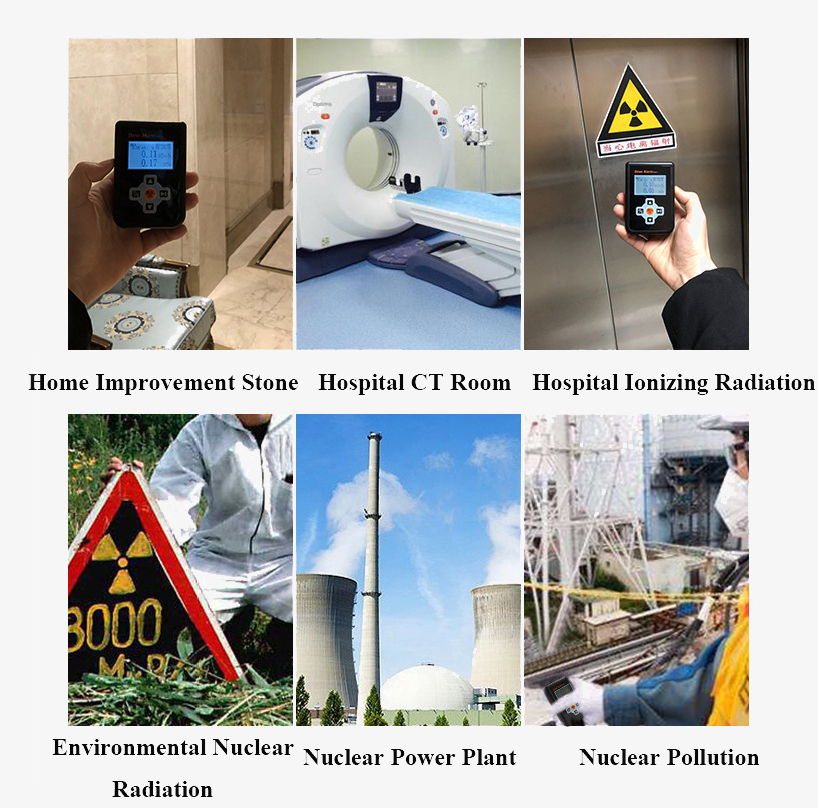A high-performance personal nuclear radiation monitor with dose equivalent rate of 0.00 ~ 999 μSv/h, can be operated between -15 ℃ and 50 ℃. SISCO's nuclear radiation detector has two-alarm modes of sound/ light that can be turned on and off, and the brightness of the alarm light can be adjusted.
Features
- Monitoring X-ray γ-ray and hard β-ray.
- Radiation detector has high sensitivity and can measure background radiation.
- Personal radiation meter has built-in multi-language operation interface.
- It can display the dose rate and cumulative dose, and monitor and alarm the three-digit data of radiation time average at the same time.
- Equipped with dose alarm and particle alarm prompt, and the alarm sound can be turned on and off.
- No. 5 battery and rechargeable battery can be charged, and it can start up without battery charging.
- The two-alarm modes of sound/light can be turned on and off, and the brightness of alarm light can be adjusted.

Handheld LCR meter panel details
- LCD display
- Power button (Press and hold the switch for 3 seconds)
- Return key
- Menu key
- Up button
- Down button
Applications
SISCO nuclear radiation detectors are widely used in police, fire departments, environmental organizations, metal recycling companies, ports, airports, ceramics factories, research institutes, laboratories, etc.

| Model | SISCO-FS300 |
| Detection Ray | γ、X and hard β radial |
| Detector | energy compensation GM tube (geiger counter tube) |
| Dose Equivalent Rate | 0.00 ~ 999 μSv/h |
| Average Equivalence Rate at 5 Minutes | 99.0 μSv/h |
| Cumulative Dose Equivalent | 0.00 μSv ~ 99999 μSv/h |
| Energy Range | 30 keV ~ 1.5 MeV ≤± 30% |
| Relative Inherent Error | ≤± 10% |
| Sensitivity | 80 CPM/μSv/h |
| Power | 25 mA |
| Standby Time | About 4 days |
| Operating Temperature | -15 ℃ ~ +50 ℃ |
| Relative Humidity | ≤ 95% (+ 45 ℃) |
| Power Supply | two No. 5 (AA) batteries can use No. 5 rechargeable battery |
| Weight | 0.3 kg |
| Dimension | 132*70*26 mm |
Q1: What is a radiation detector?
A1: Radiation Detector is an instrument used to detect or identify high-energy particles, such as those produced by nuclear decay, cosmic radiation, or reactions in a particle accelerator.
Q2: How does a personal radiation detector work?
A2: Personal radiation detectors are very sensitive, designed to detect changes in the gamma radiation level slightly above the background with a fast response time. Most PRDs provide a digital display of the exposure rate and a visual, auditory, or vibratory alarm at preset thresholds.
Q3: What should I look for in a radiation detector?
A3: The selection considerations for radiation detectors include: Type(s) of radiation for which exposure is expected (alpha, beta, gamma, neutron, X-rays, etc.) Desired functions – is the use to measure total radiation dosage over time (as with a dosimeter), or is a more detailed measurement needed?
Tips: What should be paid attention to when using a radiation detector?
- During the use of the instrument, it is necessary to ensure that there is no obstruction between the detection port of the radiation detector and the radioactive source to be measured.
- When using the radiation detector to measure the reflection source, the measurement window should not face the sun, otherwise the reading may be affected to a certain extent.
- The probe should be installed in the mesh window on the back of the radiation detector, and the mesh window needs to be aligned with the object to be measured during the measurement.
- When the mode switch is in mR/hr, μSV/hr or CPMCPS state, the reading displayed by the instrument will be displayed every three seconds, which may cause significant fluctuations in the displayed radiation level at low count rates.
Thank you for buying industrial test and measurement equipment on SISCO.com, all products sold by SISCO and the partner cover a 12 months warranty, effective from the date of receiving the products.
What is covered?
SISCO is responsible for providing free spare parts, and free technical support to assist the customer to repair the defective products until the problem is solved.
What is not covered?
- Product purchased from anyone other than a SISCO store or a SISCO authorized reseller.
- Expendable parts.
- Routine cleaning or normal cosmetic and mechanical wear.
- Damage from misuse, abuse or neglect.
- Damage from use of parts other than SISCO approved.
- Damage from use outside the product’s usage or storage parameters.
- Damage from use of parts not sold by SISCO.
- Damage from modification or incorporation into other products.
- Damage from repair or replacement of warranted parts by a service provider other than a SISCO authorized service provider.
- Damage caused by the application environment not meeting the product usage requirements and the failure to perform preventive maintenance.

